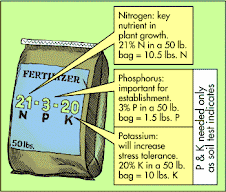 Many roses need pruning in late winter. As the snow melts and the weather hints of spring, take a look at your roses. Many are already showing bud development.
Many roses need pruning in late winter. As the snow melts and the weather hints of spring, take a look at your roses. Many are already showing bud development. Pruning depends on the type of rose. Pruning early will save the growth energy for the pruned plant. Late pruning can cut off a lot of the plant’s effort that cannot be replaced in time for blooming. Provide roses a sunny, very well ventilated location with good drainage and attentive pruning for best results.
When to Prune: Repeat bloomers like floribunda, hybrid tea, hybrid rugosa and shrub roses are classed as modern roses. Unlike ‘old’ or ‘antique’ type roses, which bloom once on last year’s wood, modern roses usually bloom on new wood. Old roses may only bloom one time per year. Modern roses bloom repeatedly or constantly.

Trimming the modern rose in late winter or early spring will encourage new, healthy growth filled with many blooms. Old roses however, should be pruned after blooming. To encourage the most growth on the modern rose in Kentucky, pruning can begin as early as late February, and no later than early April. Pruning modern roses after early April may dwarf the plant, removing a lot of growth that will not be replaced in time for blooming.
How to Prune: Using sharp pruning cutters, make cuts ¼ inch above a strong, outfacing bud. Don’t leave stubs or deface the bud. The bud will then produce branches that will grow outward from the plant rather than crowding the center of the plant. Remove canes smaller than pencil diameter. Prune for a natural shape unless a rigid style is sought. Deadhead all season, removing blooms back to a stronger stem, with five leaflets when reasonable.

Hybrid Teas and Floribunda: A hybrid tea can be pruned severely, to 12 to 18 inches high. Taller will create smaller, more plentiful flowers. Leave 4 to 5 canes. Hybrid teas are pruned to create specimen flowers and a lightweight plant, not to create a bushy shrub. Floribundas are leggy bushes to shrub type bushes with short stemmed flower clusters. Prune leggy varieties severely as you would hybrid teas. Prune the shrub type floribunda later in spring and more lightly.
Climber and Pillar Roses: Climbing roses that bloom once are pruned after blooming. Repeat climbers are pruned in late winter. Prune one fourth of the old canes of all climbers and trim lateral shoots back to two or three buds. Retain a handful of healthy, strong canes. Further trim for size and shape. During the blooming season, deadhead repeat bloomers to encourage more roses.

Shrub and Rugosa: Prune modern shrub roses after two or three years of growth. Remove dead or crowded canes. Cut back by one third and trim for shape. Hybrid rugosa repeat their blooms and have dense, arching canes. Rugosas have colorful hips (fruit). Cut out old canes and shorten remaining canes by one third.
Knock Out Roses® are popular, very hardy shrub roses that demand less care than most roses. In Kentucky, in early April use hedge trimmers or loppers to cut the plant down by about one third to one half its height. Don’t take the plant to less than 12 to 18 inches in height.
Pruning will enhance the growth of roses considerably. As winter ends go outdoors and dream of sunny days while preparing your roses for spring. You will be rewarded with breathtaking blooms full of color and fragrance.







